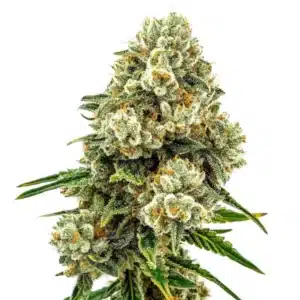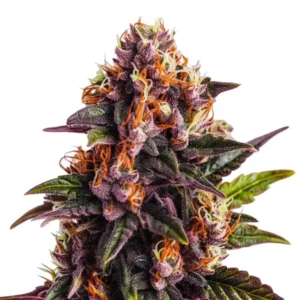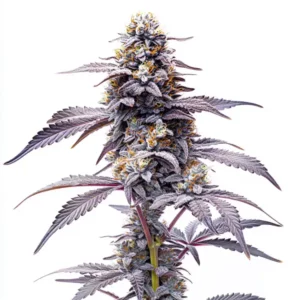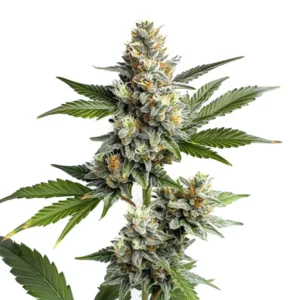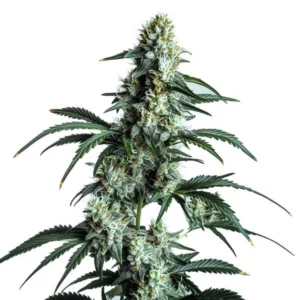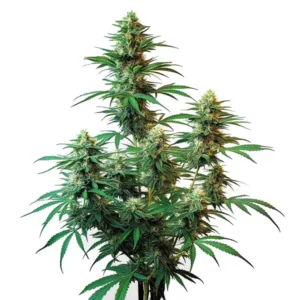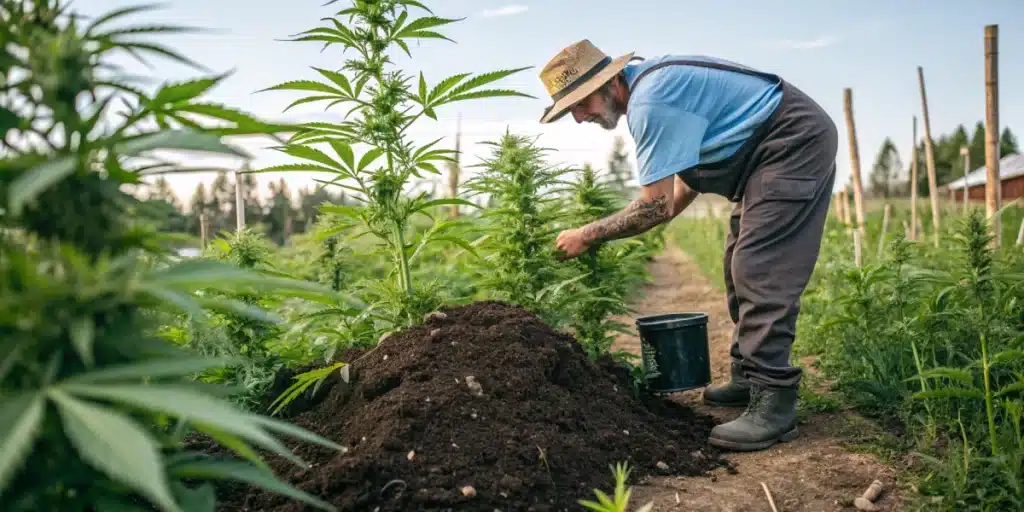
Best Fertilizer for Outdoor Cannabis: Boosting Growth Naturally
Achieving the best fertilizer for outdoor cannabis can be a game changer for growers seeking vigorous plant development and robust yields. With an emphasis on nutrient-rich blends, smart watering practices, and soil amendments, outdoor cannabis cultivation can thrive naturally. The quest for the best fertilizer for outdoor cannabis has led many to test various methods that combine scientific precision with a bit of natural charm.
Every gardener aiming for top-notch results understands that using the fertilizer means tailoring nutrient delivery to the plant’s unique growth cycle. In outdoor settings, factors such as sun exposure, wind, and fluctuating temperatures demand fertilizer solutions that provide steady nutrition while enhancing the plant’s innate resilience.
Recommended Strains
Acid Diesel
|
|
THC | 18% - 20% (Medium) |
|
|
Type | Feminized |
|
|
Yield | Low |
|
|
Phenotype | 60% Indica / 40% Sativa |
Alien GG
|
|
THC | 23% - 24% (Medium) |
|
|
Type | Feminized |
|
|
Yield | High |
|
|
Phenotype | 70% Indica / 30% Sativa |
Cannabis Nutrient Needs: A Guide to Optimal Growth
Essential Nutrients and Soil Composition
Cannabis plants require a well-balanced supply of macronutrients and micronutrients for optimal performance. Nitrogen, phosphorus, and potassium are fundamental, while elements such as calcium, magnesium, and sulfur help fine-tune growth patterns. Gardeners searching for the best fertilizer for outdoor cannabis often focus on products that support robust root development and vibrant foliage.
Outdoor cannabis thrives when the soil composition is rich and fertile. Maintaining the right pH and organic matter is equally important. A slight imbalance in nutrients can lead to less vigorous growth, making it essential to select a product that meets the best fertilizer for cannabis outdoors standards. Smart growers monitor their soil through regular testing to ensure nutrient availability aligns with plant needs.
Watering and Nutrient Absorption Techniques
Effective watering practices are vital for nutrient absorption. When using the best fertilizer for outdoor weed, proper irrigation helps distribute nutrients evenly throughout the root zone. Techniques such as drip irrigation and deep watering cycles are popular among seasoned growers, ensuring that nutrients reach every corner of the plant’s environment.
Overwatering or inconsistent moisture levels can hinder nutrient uptake. By focusing on precise water management and timely feeding sessions, cultivators can boost the efficiency of their chosen fertilizer. Maintaining a regular watering schedule encourages healthy root expansion, and many growers adjust their schedules based on local weather conditions.
Promos & Deals
Organic vs Synthetic Fertilizers: Weighing Your Options for Outdoor Cannabis
Organic Benefits for Best Fertilizer for Outdoor Cannabis
These outdoor cannabis fertilizers offer a natural pathway to nourishing your plants. These products typically contain compost, bone meal, and other natural ingredients that slowly release nutrients. Gardeners favor organic outdoor cannabis fertilizer solutions because they improve soil structure and foster beneficial microbial activity over time. For those determined to use the best fertilizer for outdoor cannabis, organic options can lead to sustainable and long-lasting results.
Many outdoor cultivators have shifted towards organic alternatives due to their eco-friendly credentials and their ability to improve soil fertility organically. Organic fertilizers not only provide the fertilizer in terms of immediate nutrient supply but also contribute to long-term soil health and sustainability.
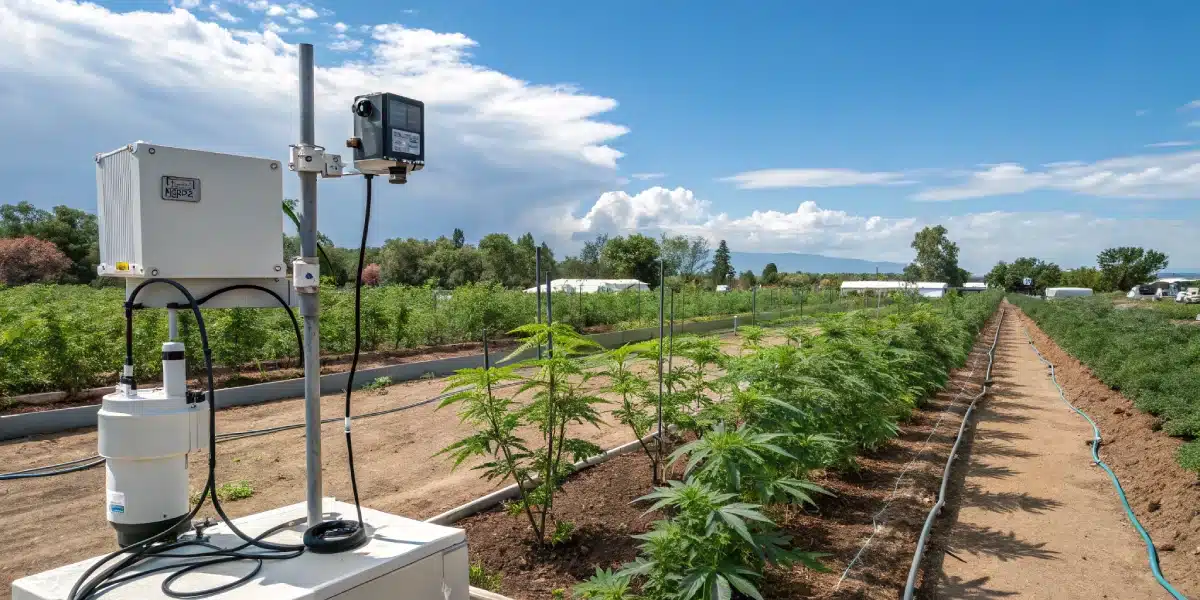
Synthetic Approaches for Best Fertilizer for Cannabis Outdoors
Synthetic fertilizers are engineered to deliver targeted nutrients quickly. When using the best fertilizer for cannabis outdoors, these formulas can be tailored to the specific growth stage of the plant. Precision in nutrient dosing means that synthetic options often yield fast and measurable improvements. For growers who appreciate rapid response, synthetic formulas offer predictable results.
While synthetic products provide an efficient nutrient boost, some cultivators are cautious about potential salt build-up in the soil. Balancing synthetic fertilizer use with organic amendments can ensure that plants benefit from rapid nutrient delivery without compromising soil health. Many professionals combine both approaches to optimize growth in outdoor environments.
Top 5 Fertilizers for Outdoor Cannabis: Reviews and Recommendations
Product Reviews and Field Results
Selecting the best fertilizer for outdoor cannabis involves examining a range of products that have demonstrated success in various climates. Detailed field tests reveal that fertilizers with balanced nutrient profiles, slow-release properties, and compatibility with organic matter perform best. Growers report that products meeting these criteria have elevated their yields significantly.
Independent testing has highlighted five fertilizers that consistently deliver excellent results. Among these, some formulations are designed specifically for the best fertilizer for outdoor cannabis, while others cater to the best fertilizer for cannabis outdoors by providing versatile nutrient profiles adaptable to diverse soil types and weather conditions.
Comparative Analysis and Market Trends
In a competitive market, reviews and comparative studies guide gardeners toward high-performing products. Analysis of fertilizer performance, cost efficiency, and ease of application shows that many top-rated fertilizers excel in outdoor environments. Experts in nutrient management advocate for products that emphasize natural ingredients and slow nutrient release.
Trends indicate that more cultivators are leaning toward hybrid solutions that combine the best of organic and synthetic approaches. This combination allows for flexible nutrient management that meets the demands of outdoor cultivation. Reviews highlight that integrating these methods results in impressive growth and robust yields when using the best fertilizer for outdoor cannabis.
When and How to Fertilize for Outdoor Cannabis Success
Seasonal Timing and Growth Phases
Timing is everything when applying the best fertilizer for outdoor cannabis. Adjusting feeding schedules according to the plant’s developmental stage can lead to dramatic improvements in growth and potency. During early vegetative stages, nutrient needs are different compared to the flowering phase, so selecting a fertilizer that adapts to these changes is paramount.
Outdoor cannabis typically benefits from regular, smaller feedings rather than sporadic heavy applications. Gardeners often plan fertilizer schedules around local weather patterns and seasonal cycles to ensure that plants have access to the fertilizer at every critical growth phase.
Application Techniques and Dosage Precision
Effective application methods ensure that nutrients are efficiently absorbed by the roots. Using techniques such as soil drenching, foliar feeding, or slow-release granules can provide consistent nutrient levels throughout the plant’s life cycle. Whether employing the best fertilizer for outdoor cannabis or the best fertilizer for cannabis outdoors, precision in dosage is essential.
Professional cultivators emphasize the importance of following manufacturer recommendations for dosage. Overfeeding may lead to nutrient burn, while underfeeding can stunt growth. Employing smart feeding strategies, such as periodic adjustments based on plant performance, optimizes fertilizer efficiency in outdoor settings.
Advanced Strategies for Outdoor Cannabis Cultivation
Enhancing Soil Microbiology and Nutrient Cycling
Successful outdoor cultivation is built on a foundation of rich, living soil. Enhancing soil microbiology through compost teas, mycorrhizal fungi, and organic matter creates an environment where the fertilizer is fully effective. These techniques improve nutrient cycling, ensuring that every nutrient applied is put to good use.
Integrating soil amendments that promote microbial activity can result in stronger root systems and overall plant resilience. Gardeners have found that regular additions of organic matter help create a balanced ecosystem where nutrient uptake is maximized. This balance is key when striving to achieve the best fertilizer for cannabis outdoors.
Integrating Companion Planting and Crop Rotation
Companion planting and crop rotation offer additional benefits for outdoor cannabis gardens. By planting nitrogen-fixing cover crops or interspersing other beneficial species, growers create a dynamic ecosystem that supports nutrient availability. Such strategies help maintain the soil’s health and optimize the performance of the best fertilizer for outdoor cannabis.
Crop rotation also prevents nutrient depletion and minimizes pest infestations. These practices ensure that the soil remains fertile and ready to support vigorous plant growth season after season. With these techniques, outdoor cultivators can ensure sustained success while using the best fertilizer for cannabis outdoors.
Smart Tips for Consistent Outdoor Cannabis Growth
Monitoring Environmental Variables
Maintaining optimal growth conditions for outdoor cannabis requires vigilance over environmental factors. Temperature fluctuations, humidity, and soil moisture all influence the performance of the fertilizer. Regular monitoring enables prompt adjustments, ensuring that nutrient delivery remains efficient.
Using tools like soil moisture meters and pH testers can help growers stay ahead of potential issues. Adjustments based on real-time data ensure that plants are fed at the ideal times, maximizing the benefits of the best fertilizer for cannabis outdoors. Keeping a detailed log of environmental changes and corresponding plant responses has proven invaluable for many cultivators.
Preventative Measures Against Nutrient Deficiencies
Proactive strategies help prevent deficiencies before they manifest as visible symptoms. Regular soil testing and gradual adjustments in fertilizer dosage help maintain a steady flow of nutrients. Techniques such as supplementing with micronutrients can prevent issues like chlorosis and stunted growth, ensuring that the best fertilizer for outdoor cannabis performs at its peak.
Experienced growers recommend integrating organic matter and natural amendments to buffer against sudden nutrient swings. By anticipating potential issues and adjusting feeding schedules, cultivators can maintain healthy, vigorous plants throughout the growing season.
Practical Tips for Maximizing Nutrient Efficiency
Tailoring Nutrient Regimens to Specific Strains
Different cannabis strains have unique nutritional demands. For example, many cultivators find that strains such as Blue Dream Seeds require specific nutrient ratios during flowering. Adjusting fertilizer regimens to meet the distinct needs of each variety can enhance flavor, potency, and overall yield. Understanding these differences empowers growers to optimize the fertilizer for each plant type.
By tailoring nutrient applications to each strain, cultivators can achieve higher success rates and enjoy more consistent harvests. Detailed observation and record-keeping support a customized approach that responds to the subtle needs of different varieties.
Combining Nutrient Sources for Synergistic Effects
A balanced approach often involves combining multiple nutrient sources to create a synergistic effect. Integrating organic composts with targeted synthetic boosters can provide a broad spectrum of nutrition. This method not only supplies the best fertilizer for outdoor cannabis but also reinforces soil structure and promotes long-term fertility.
Mixing nutrient sources can lead to more resilient plants that are better equipped to handle environmental stressors. Many experienced growers have reported that this blended approach helps sustain robust growth even in challenging outdoor conditions.
Future Trends and Developments in Cannabis Fertilization
Emerging Organic Innovations
The field of cannabis fertilization is rapidly evolving. New organic products are emerging that use innovative formulations to enhance nutrient uptake. These advancements focus on sustainability, minimal environmental impact, and long-term soil enrichment. They have been shown to work exceptionally well as the best fertilizer for outdoor cannabis.
Many companies are investing in research and development to produce fertilizers that work harmoniously with natural processes. As technology advances, growers can expect more tailored solutions that address specific environmental challenges while remaining eco-friendly.
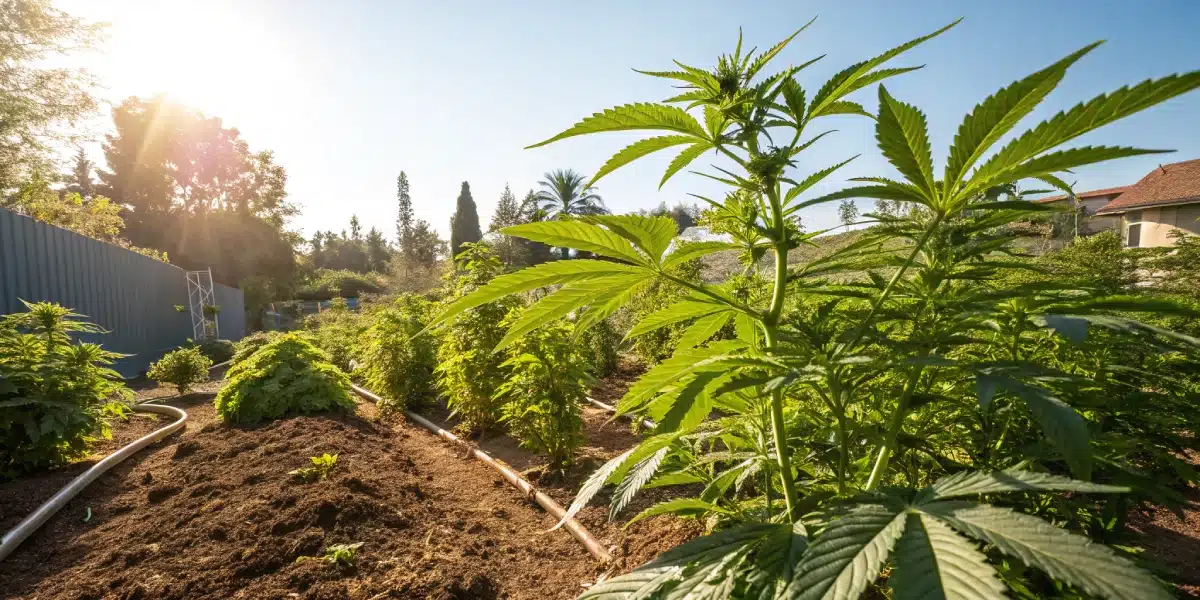
Integrating Biotechnology and Microbial Enhancers
Biotechnology plays an increasingly important role in outdoor cannabis cultivation. Microbial enhancers, for example, improve soil health by promoting beneficial bacterial and fungal communities. These biological additives complement the best fertilizer for cannabis outdoors, making nutrient delivery more efficient and natural.
Using microbial inoculants alongside traditional fertilizers has been shown to significantly improve root growth and nutrient absorption. The integration of biotechnology into nutrient management represents a forward-thinking approach that many growers are excited to adopt.
Maintaining a Sustainable Outdoor Cannabis Garden
Eco-Friendly Practices in Nutrient Management
Sustainability is at the heart of modern outdoor cannabis cultivation. Many growers are shifting to eco-friendly practices by incorporating recycled materials, organic waste, and natural composts. Such practices not only benefit the environment but also enhance the effectiveness of the fertilizer by building robust, living soils.
By reducing reliance on harsh chemicals and synthetic additives, sustainable methods promote a balanced ecosystem that supports plant health. Eco-friendly nutrient strategies have been embraced widely as they offer long-term benefits for both the garden and the planet.
Long-Term Soil Health and Regenerative Strategies
Regenerative agriculture techniques emphasize the importance of maintaining soil vitality over the long term. Practices such as cover cropping, minimal tillage, and organic amendments help restore and preserve soil ecosystems. These approaches ensure that every application of the this fertilizers contributes to lasting soil fertility.
Implementing regenerative strategies has proven effective in maintaining consistent yields year after year. Gardeners who adopt these methods often experience enhanced resilience against pests and diseases, ultimately leading to a more robust outdoor cultivation setup.
Wrapping Up Key Takeaways for Outdoor Cannabis Cultivation
Using the best fertilizer for outdoor cannabis is a multifaceted process that blends scientific principles with hands-on experience. The emphasis on nutrient balance, careful timing, and precise application methods creates a winning formula for robust growth. Whether opting for organic inputs, synthetic boosters, or a blend of both, the goal remains the same: to provide outdoor cannabis with the best fertilizer for cannabis outdoors that fosters healthy, vigorous plants.
Gardeners who pay attention to their soil, tailor their feeding strategies to specific growth stages, and remain adaptable in the face of environmental changes tend to see significant improvements. Innovative practices such as integrating smart irrigation, microbial enhancers, and data-driven adjustments have set new benchmarks in outdoor cannabis cultivation. The combination of these techniques, along with a commitment to sustainable practices, ensures that every feeding session is a step toward achieving record yields and exceptional quality harvests.
Every cultivation season brings opportunities to learn and improve. Whether you are a veteran grower or new to the craft, staying informed about the latest trends and techniques can elevate your outdoor garden. Continuous refinement of nutrient regimens, timely interventions, and a deep understanding of soil dynamics can transform a modest garden into a thriving oasis.
The journey toward achieving the best fertilizer for cannabis outdoors is filled with experimentation and innovation. Each season presents unique challenges and rewards, prompting growers to innovate with their feeding practices. Consistent monitoring, data analysis, and community engagement ensure that nutrient management remains both effective and enjoyable.
Embracing a hands-on approach and remaining flexible are essential. The outdoor environment is unpredictable, but with the right fertilizer strategy, even unexpected weather changes can be managed. With dedication and perseverance, every grower can achieve the dream of a bountiful, healthy outdoor cannabis garden.
FAQs
What makes a fertilizer the best fertilizer for outdoor cannabis?
A standout fertilizer for outdoor cannabis typically offers a balanced blend of macronutrients and micronutrients that support robust root development and vibrant foliage. Products that are engineered for slow nutrient release while maintaining a favorable pH are often preferred by growers.
Using the best fertilizer for outdoor cannabis means selecting a product that adapts to the plant’s changing needs throughout its life cycle. It should also work well in diverse outdoor conditions whether under harsh sunlight or cooler weather providing consistent nourishment for maximum yield.
How often should I apply the best fertilizer for cannabis outdoors?
The frequency of fertilization largely depends on the growth stage of your plants and the type of fertilizer used. During the early vegetative stage, lighter, more frequent feedings help build a solid foundation, while the flowering stage may require adjustments to support bud development.
Many experts recommend a schedule based on soil testing and observed plant response. By regularly monitoring moisture and nutrient levels, you can fine-tune the application rate and timing to ensure that your outdoor cannabis continuously receives the best fertilizer for outdoor cannabis.
Can I combine organic and synthetic fertilizers to achieve the best results?
Combining organic and synthetic fertilizers can be an effective strategy for outdoor cannabis cultivation. Organic options improve soil structure and foster beneficial microbial activity, while synthetic fertilizers offer precise nutrient delivery and rapid results.
A hybrid approach allows growers to reap the advantages of both worlds. Many cultivators have found that integrating these methods leads to a more resilient crop, as the organic components enhance long-term soil health and the synthetic elements provide targeted boosts during critical growth phases.


